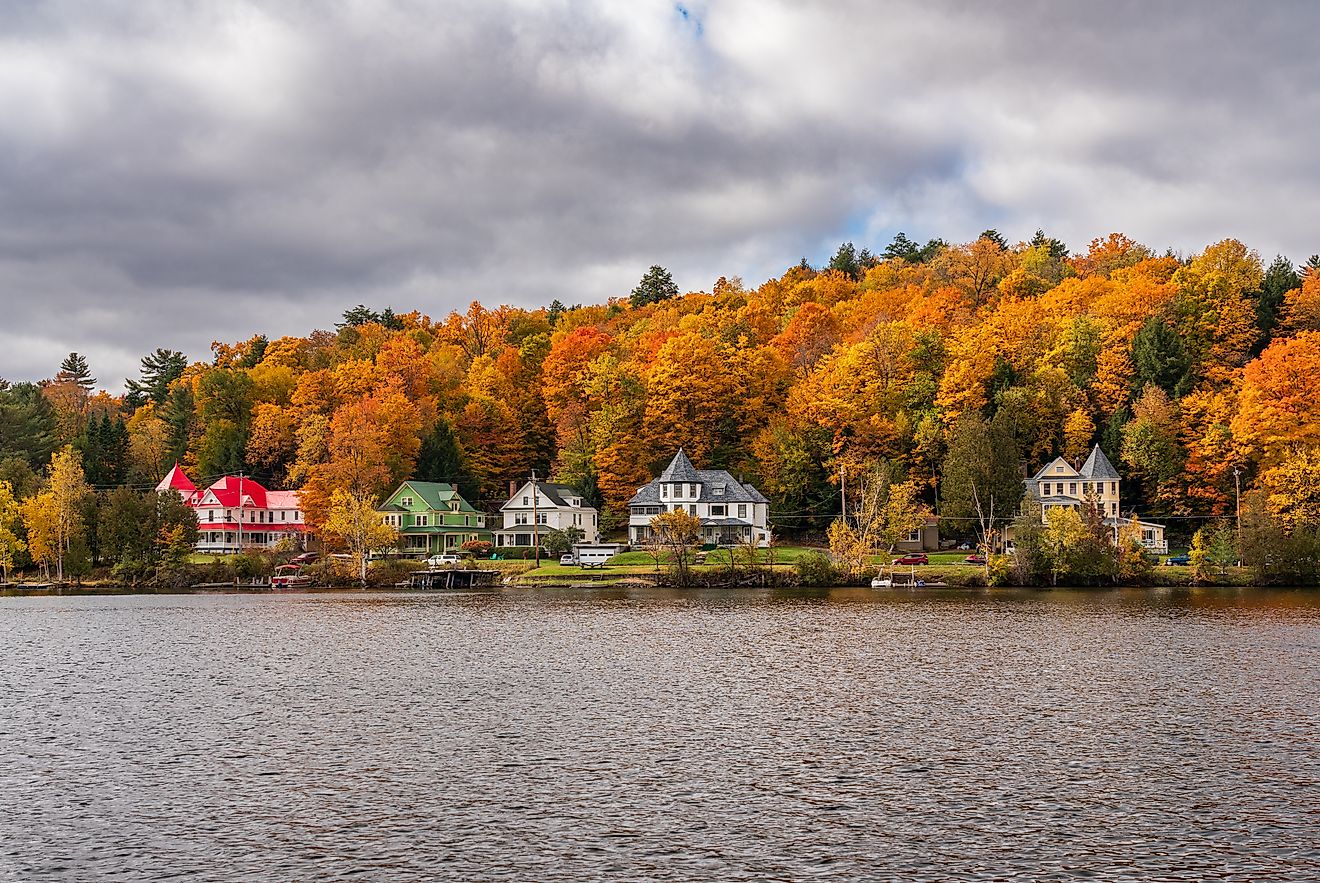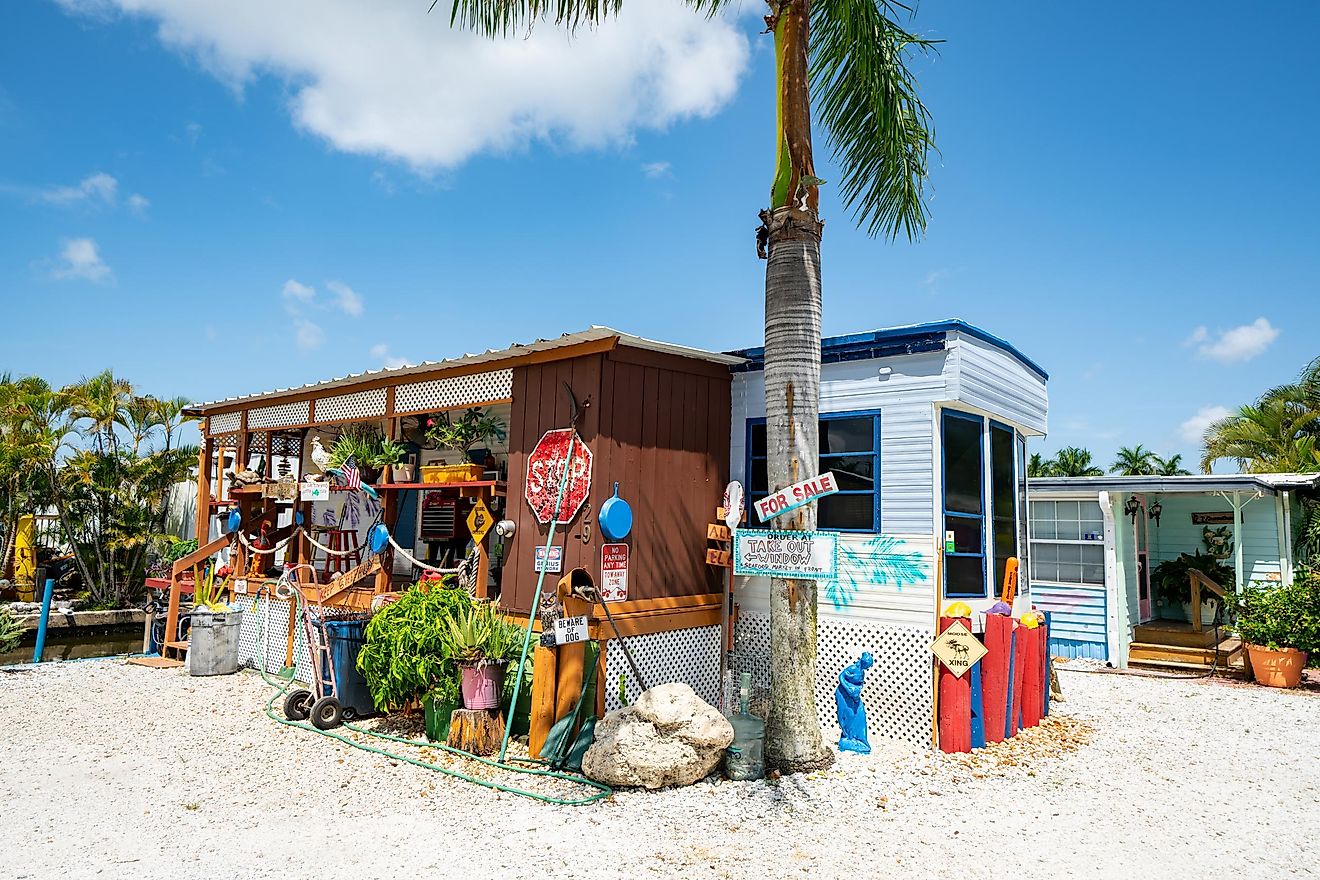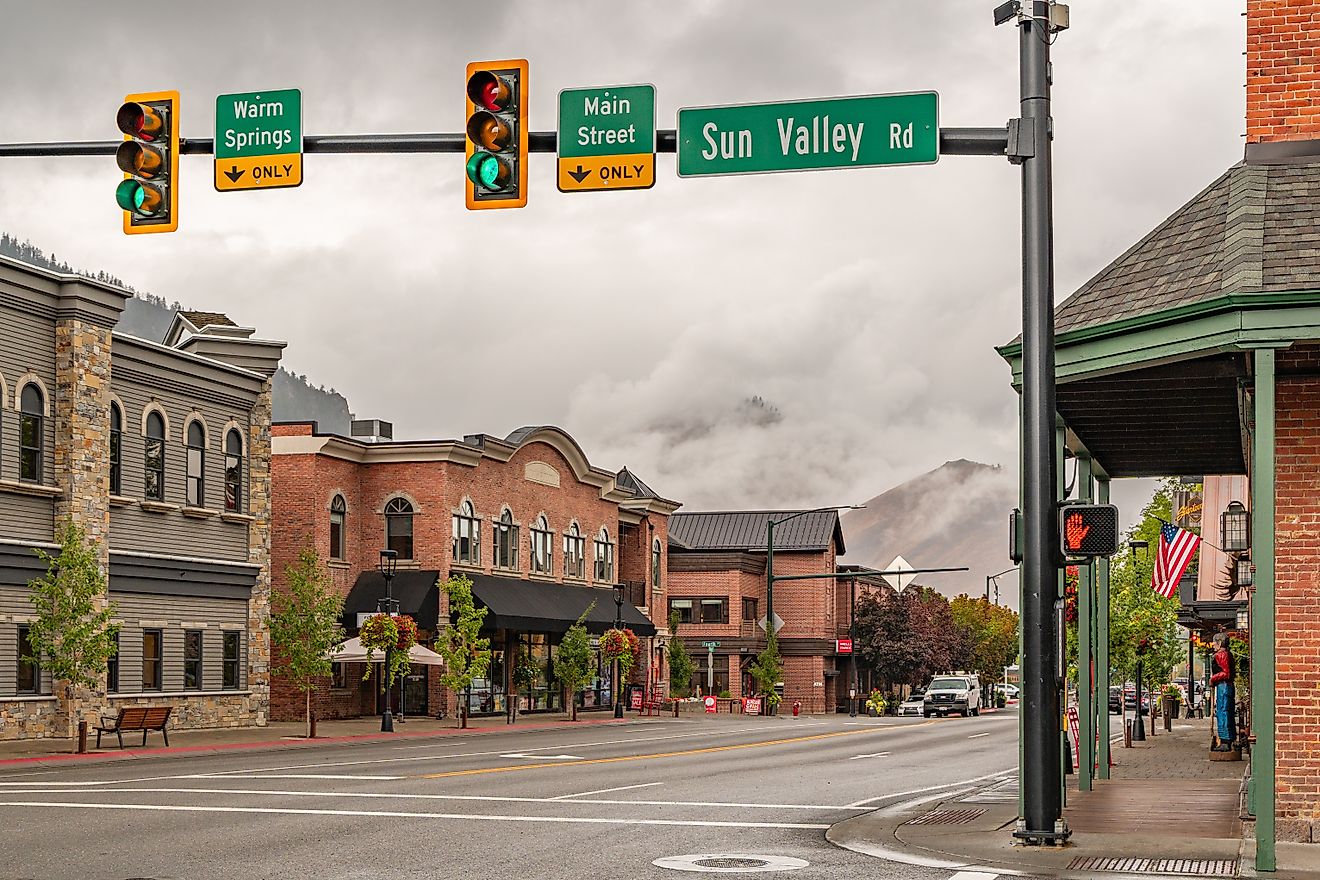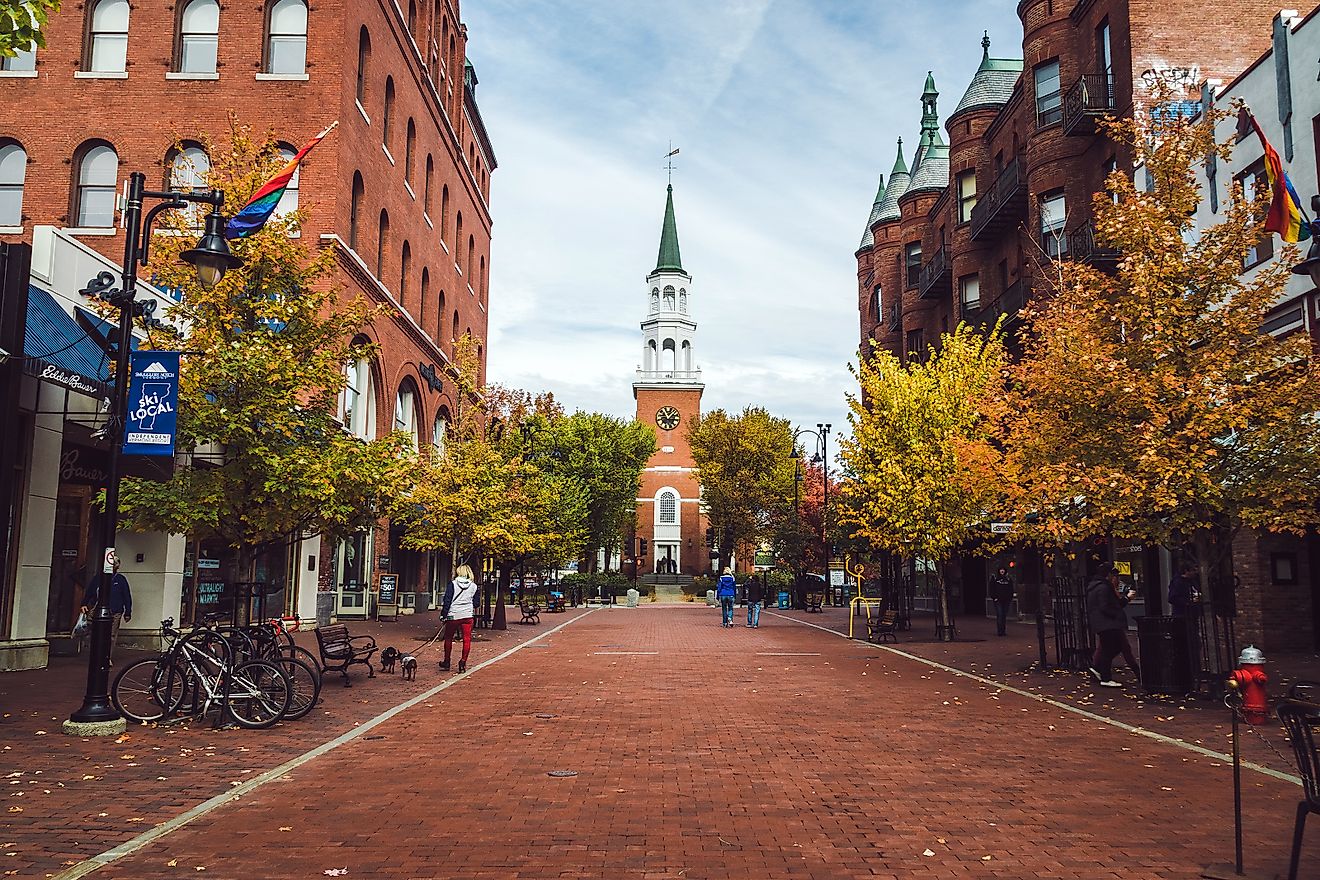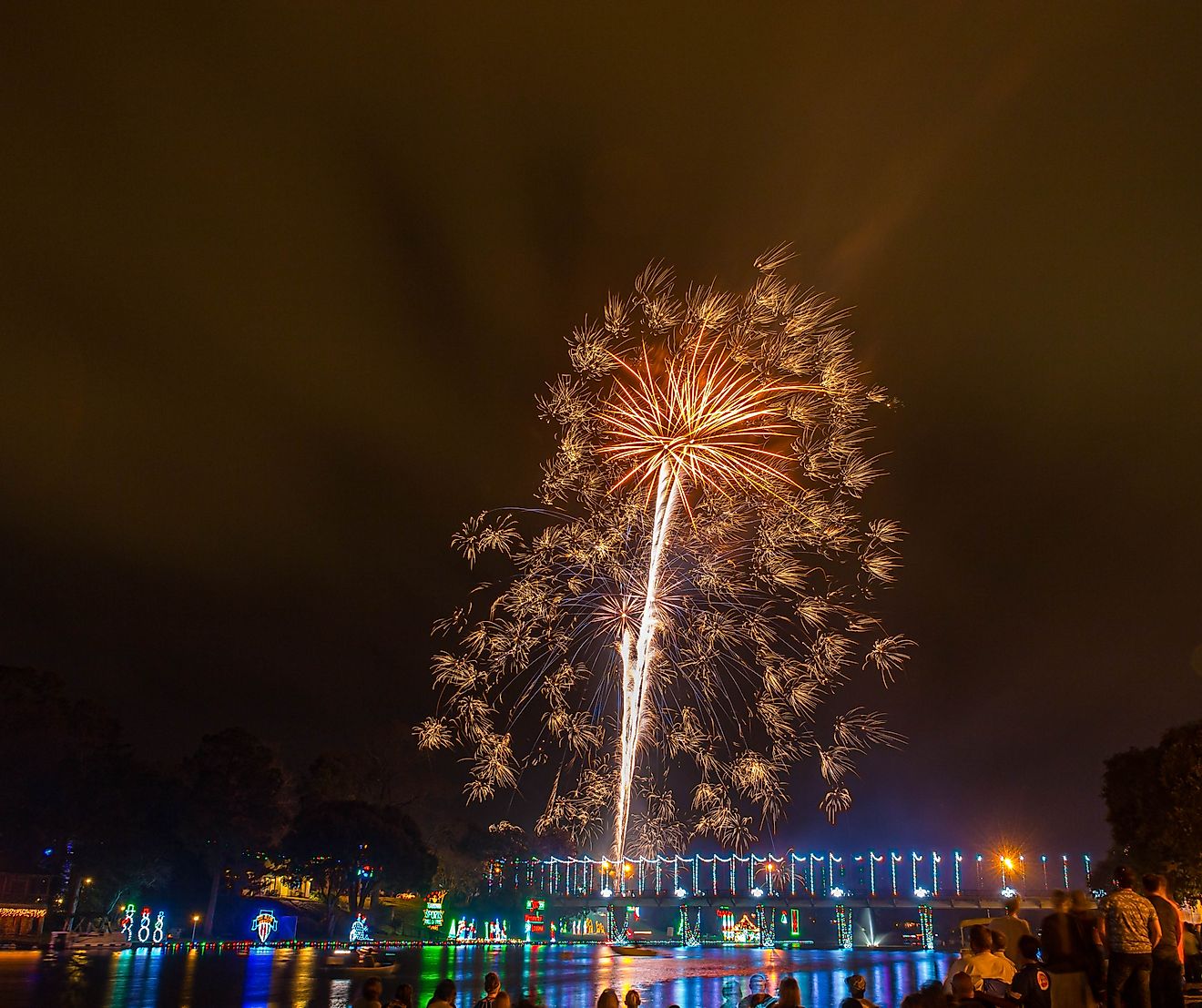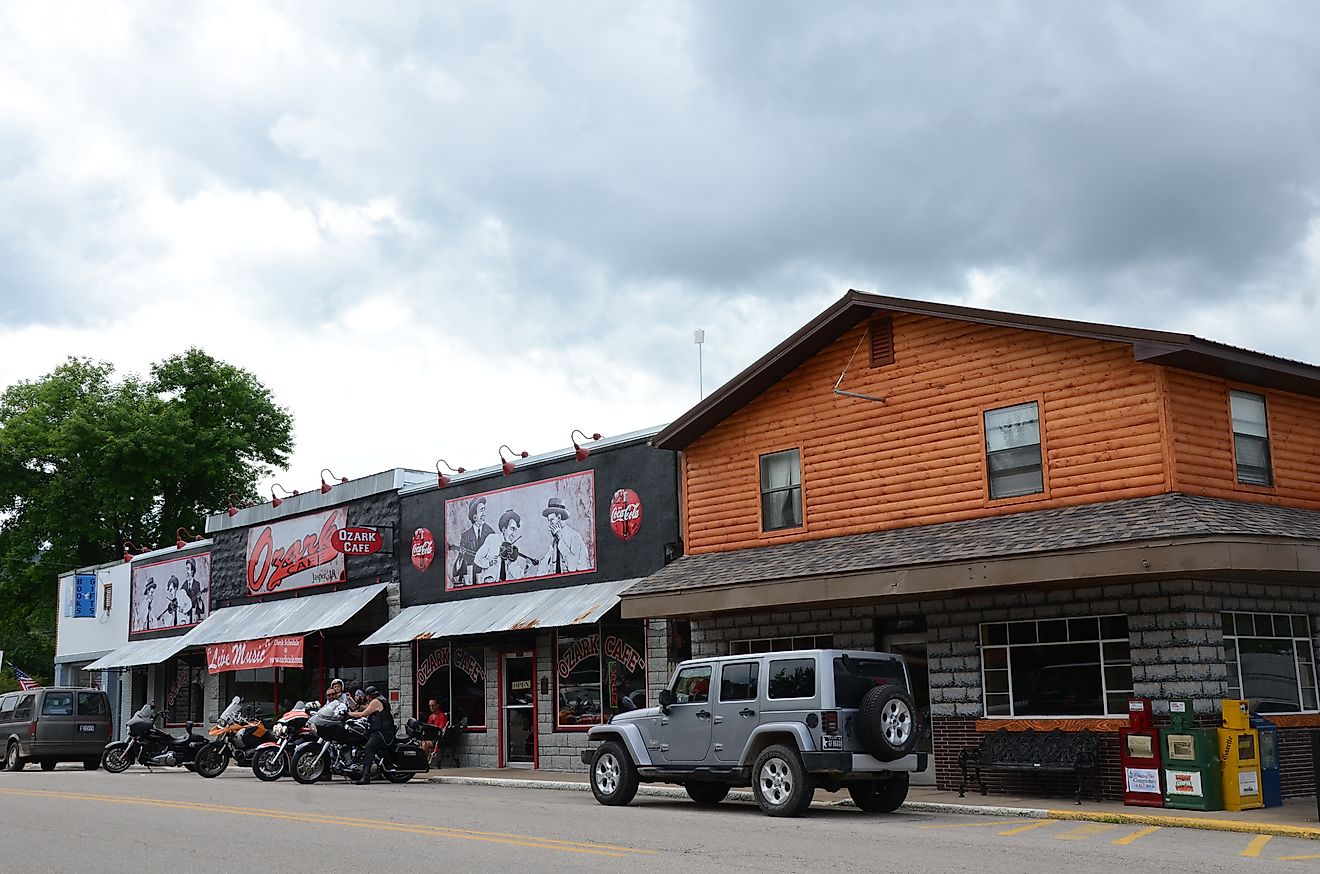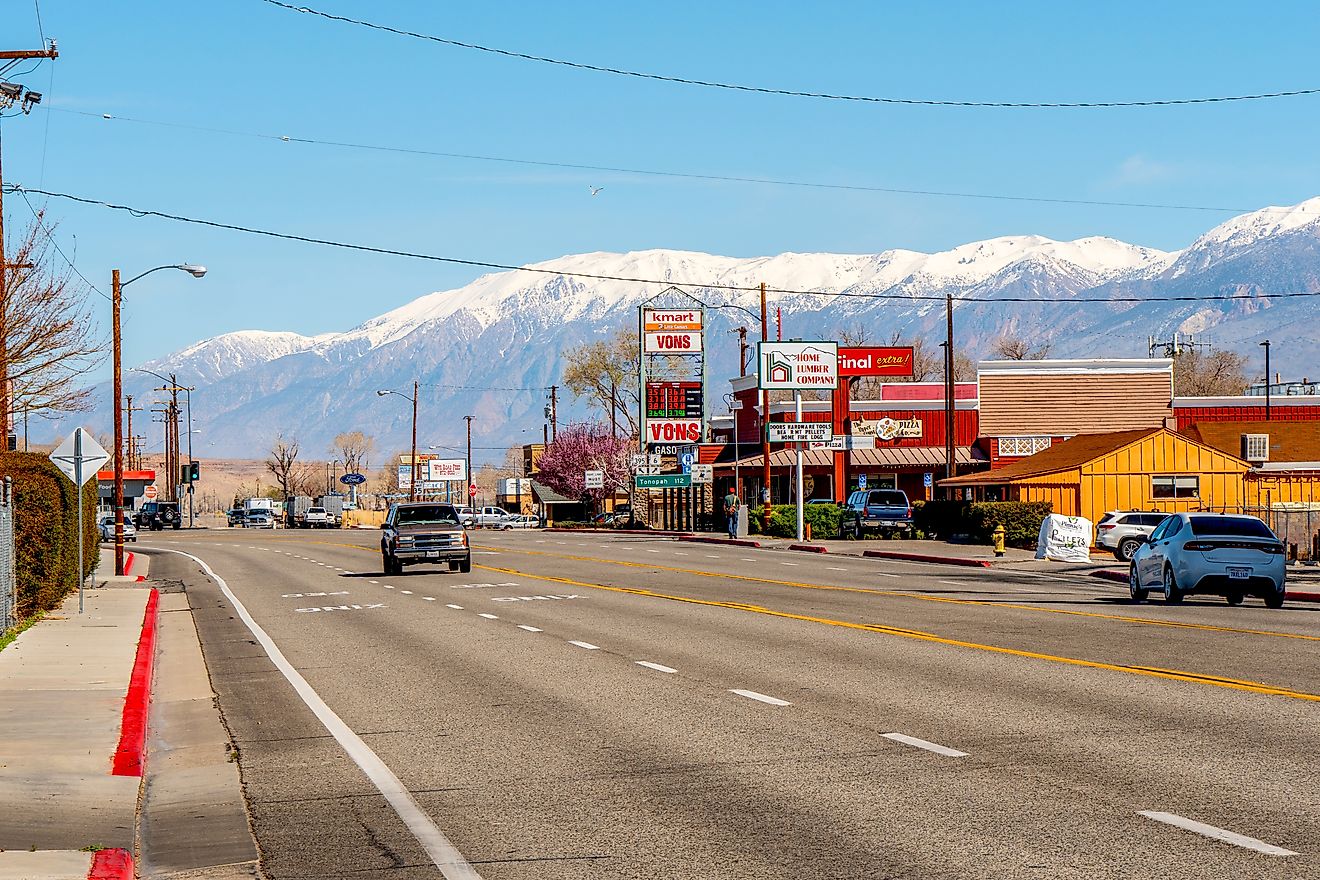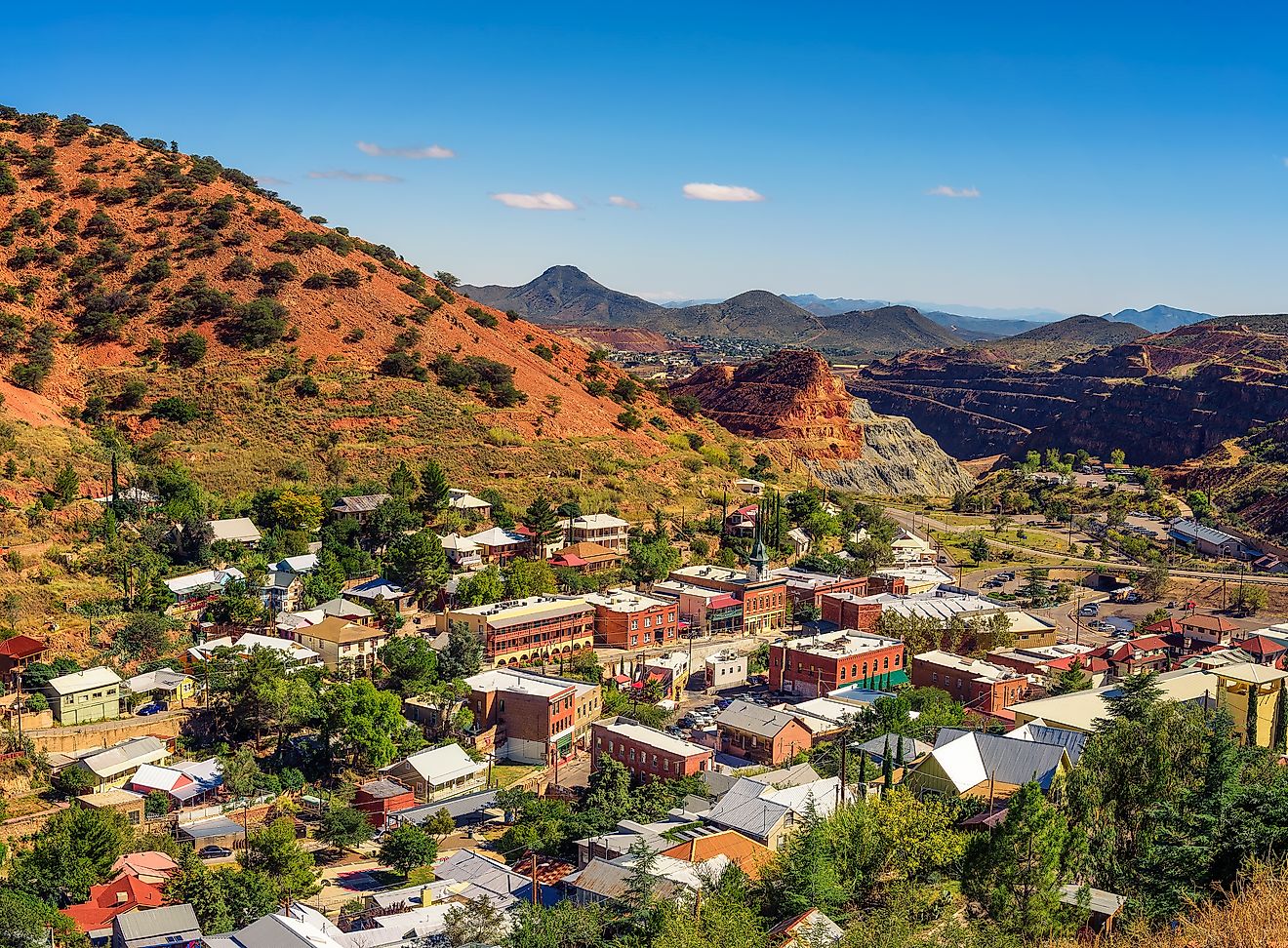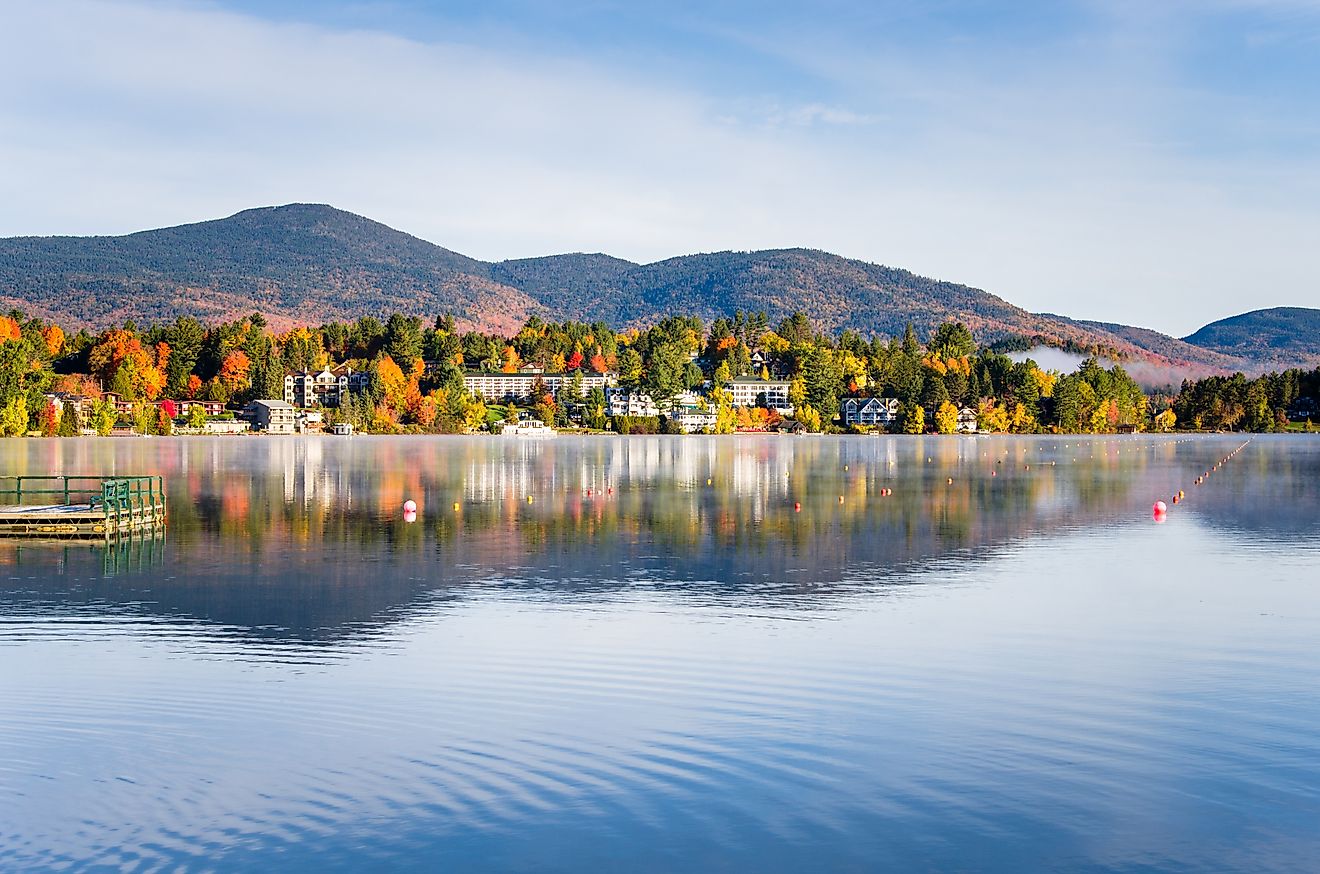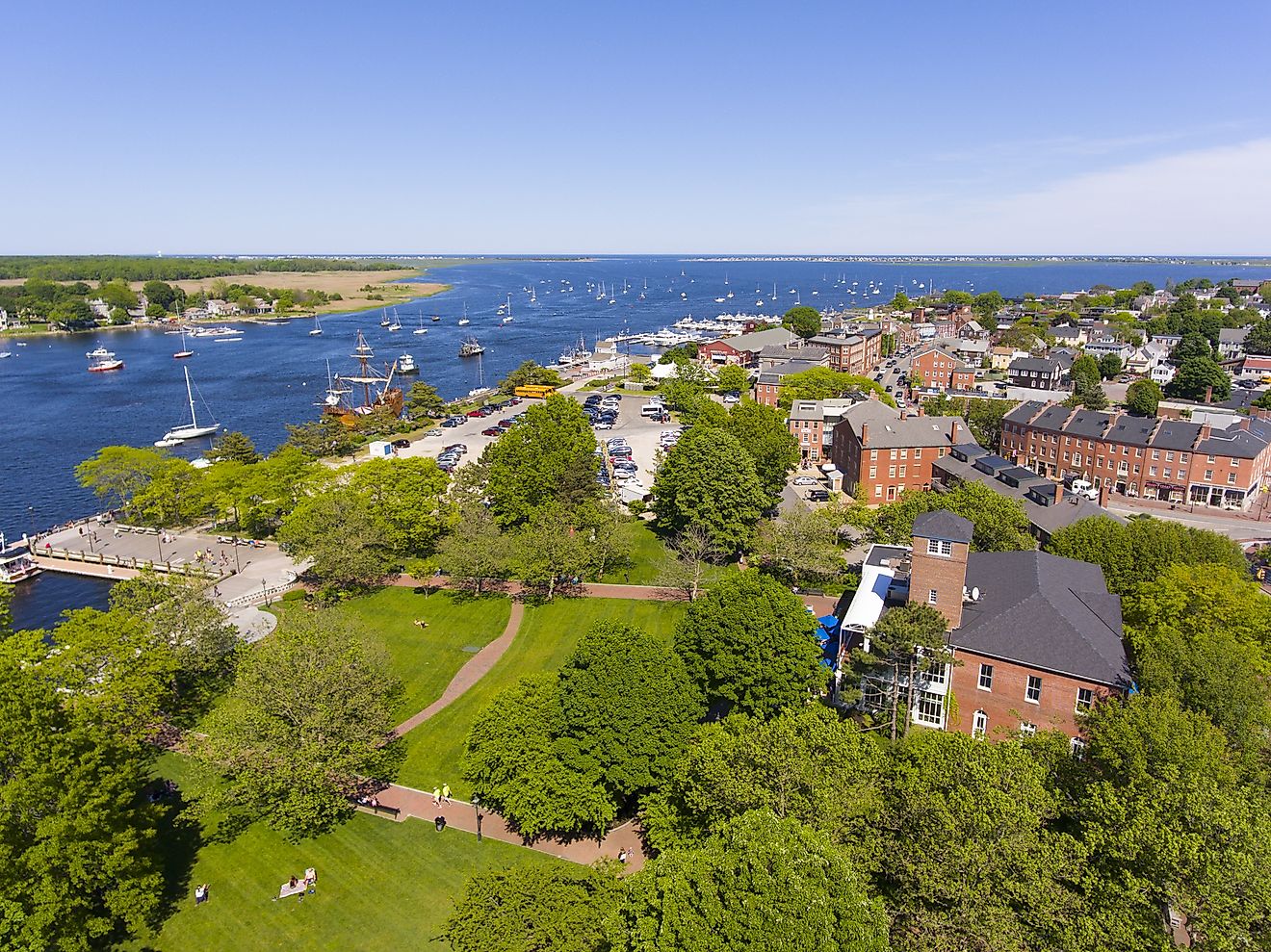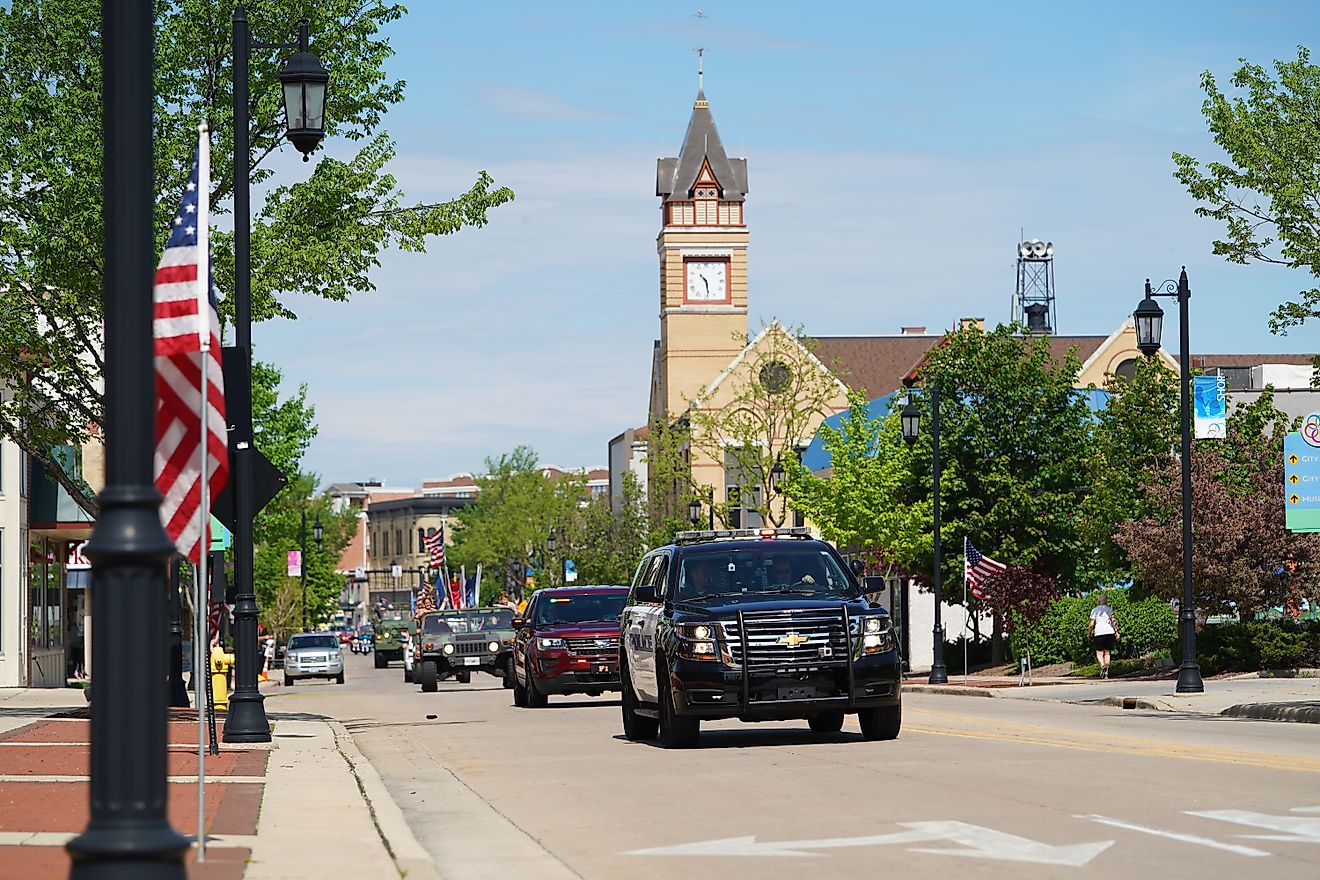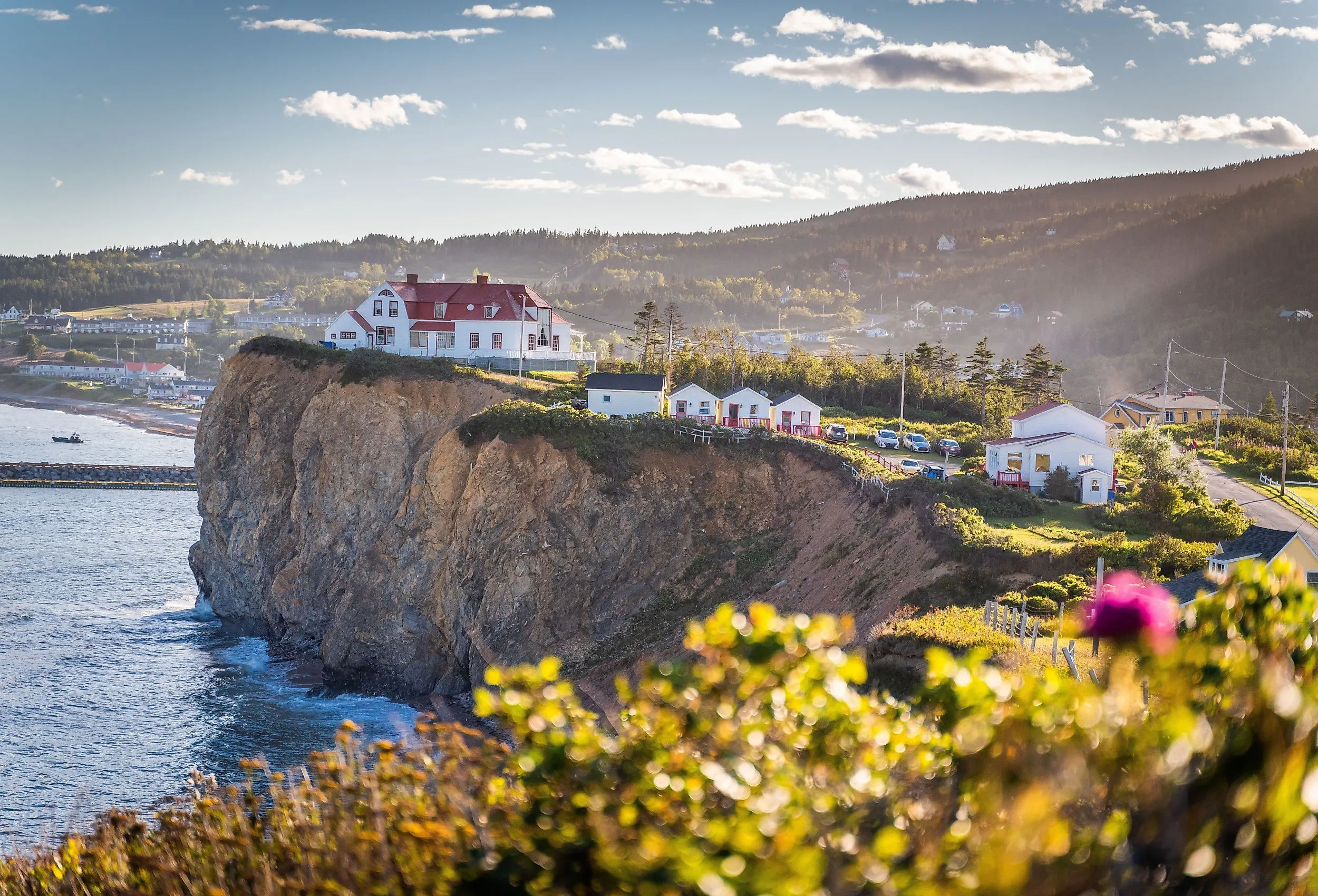
9 Prettiest Small Towns In Québec
Canada’s largest province, Québec, is made up of a mosaic of valleys, forested hills, coastal villages, and storybook streets. Beyond the busy hum of its major cities, La Belle Province is dotted with small towns that tell quieter stories: salt air and painted porches, mountains mirrored on calm waters, and church steeples that catch the morning light. From Baie-Saint-Paul’s colorful art galleries to Tadoussac’s whale-watching shores, each town captures a different side of what makes Québec so captivating. Here are nine of Quebec’s prettiest towns worth exploring.
Baie-Saint-Paul
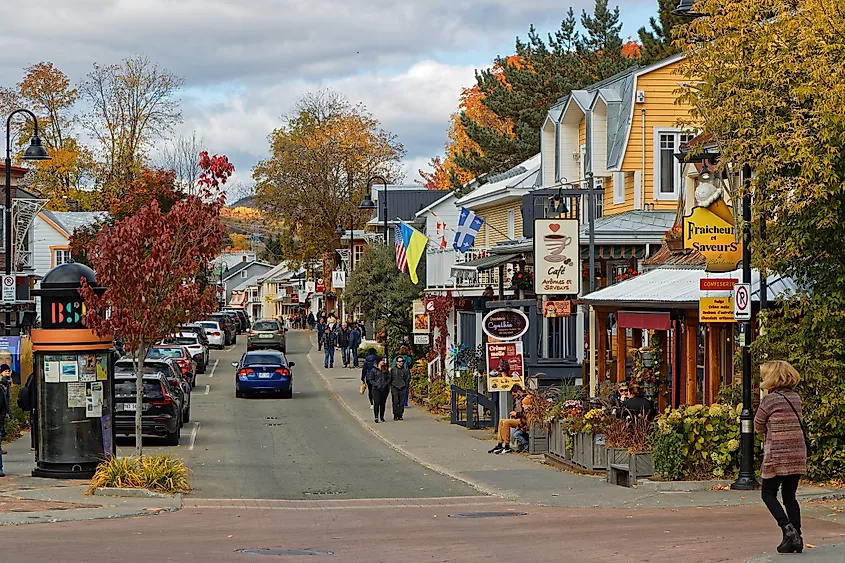
Just over an hour outside Québec City, the road to Baie-Saint-Paul winds through the Charlevoix hills before opening to a valley of painted façades, silver water, and peaks in the distance. The brightly hued buildings, colored in teal, crimson, and butter yellow, give the streets a fairytale-like whimsy.
Known for its art scene, Baie-Saint-Paul is as expressive as it is beautiful. Start at the Musée d’Art Contemporain de Baie-Saint-Paul, where light pours through sweeping windows and local artists display work deeply rooted in the region’s past and present. Then wander Rue Saint-Jean-Baptiste, where galleries like Galerie Beauchamp, Harmattan, Iris, and Porte Rouge showcase paintings, sculptures, and ceramics that reflect Charlevoix’s creative soul.
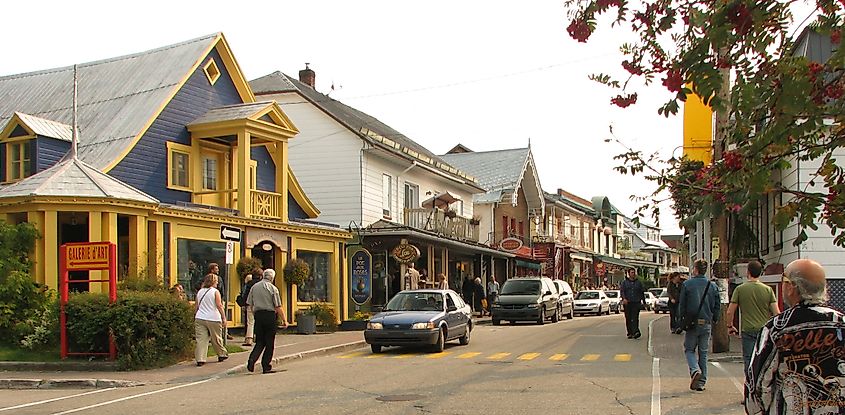
For fresh air, enjoy a hike along one of the nearby scenic trails. Sentier du Gouffre crosses marshes, meadows, and woodlands, while Sentier Les Florent takes you through fields, groves, and a former mining site. For really expansive views, Sentier des Caps de Charlevoix threads through the highlands, offering many lookouts high above the St. Lawrence River.
End your day by experiencing the many flavors of Baie-Saint-Paul: local cheeses at the Économusée du Fromage, craft brews at Le Saint-Pub - Microbrasserie Charlevoix, and a riverside meal at Le Mouton Noir.
Bromont
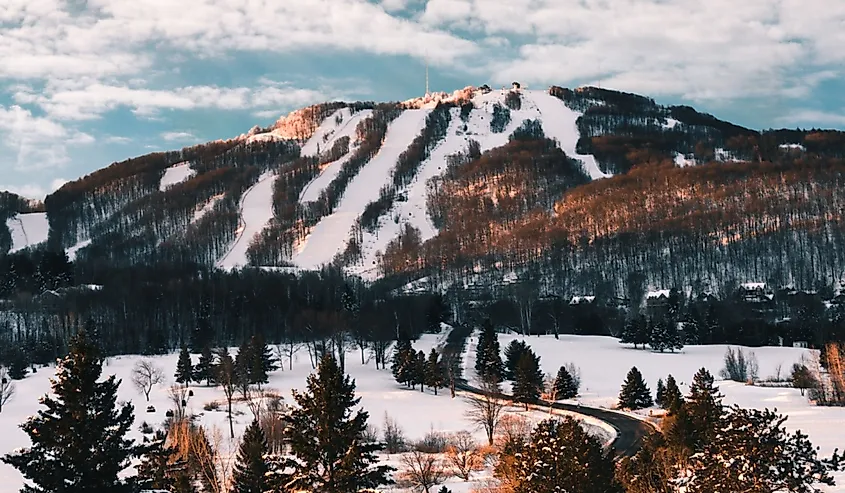
Located in the Eastern Townships, just under an hour from Montreal, Bromont is a year-round destination that strikes a balance between small-town charm and outdoor adventure.
The town is renowned as a skiing destination, home to the largest lit ski area in North America. At Bromont, montagne d’expériences, skiers of all levels can carve down 125 different trails, 91 of which are lit for nighttime skiing. When the snow melts, the mountain transforms into a water park and mountain biking playground. The mountain’s trails are part of the sprawling Parc des Sommets, which boasts more than 140 km of multi-use trails, including the popular 7-km Sentier du Grillon, which offers panoramic views of the surrounding countryside.
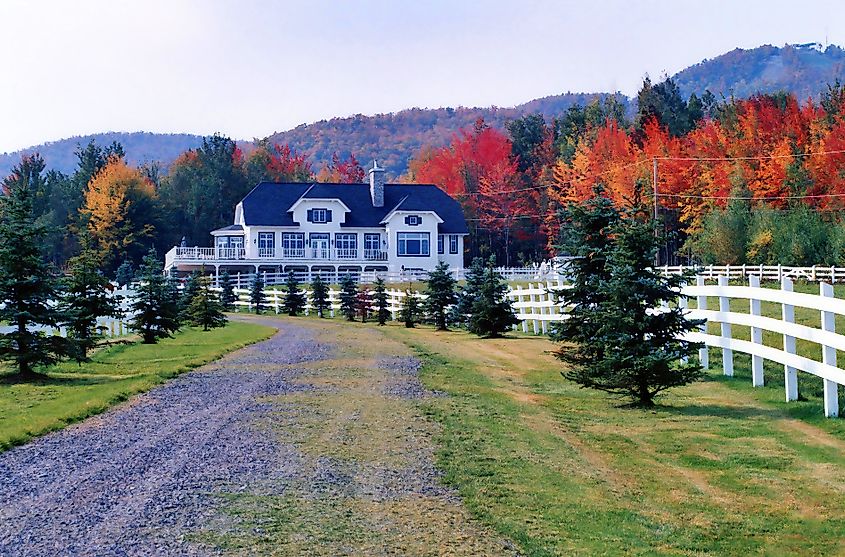
Old Bromont is equally inviting. Shefford Street, the town’s main artery, is lined with antique stores, art galleries, and many “Fièrement vélo!” (cyclist-friendly) cafés and shops. As you stroll, look for the painted utility boxes that have been transformed by local artists. Stop at Confiserie Bromont, a local chocolate museum and shop with an on-site eatery, and then mosey two doors down to Café 1792 to enjoy a latte or homemade ice cream on the terrace. Right next door, the Public Square anchors the downtown—an inviting spot for picnics, open-air markets, and year-round events.
Bromont also celebrates its heritage through two self-guided tours: one in Old Bromont and the other in the Adamsville neighborhood. Together they feature 27 interpretive signs and three murals that trace the town’s evolution, highlighting its history, architecture, and artistry.
Cowansville
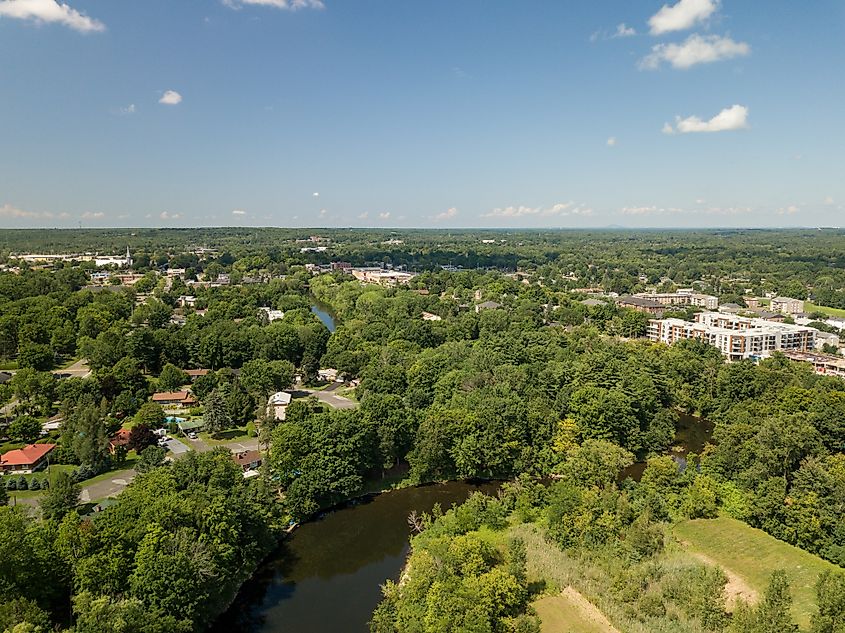
About 17 km south of Bromont and 20 km north of the US border, Cowansville is known as “the town of 14 bridges.” The 27-meter Freeport Covered Bridge, one of the region’s oldest, was built in 1870 and remains in use today—its red wooden frame reflected in the river below, a postcard scene that perfectly captures the town’s appeal.
Cowansville’s allure lies in its blend of heritage and natural beauty. The Sweetsburg Historical District showcases stately Victorian-style residences along Main and du Sud Streets, reflecting the town’s Loyalist roots. Nearby, Lac Davignon offers a tranquil setting for canoeing, kayaking, paddleboarding, and lakeside relaxation, while the Nature Centre of Cowansville provides peaceful trails, boardwalks, and picnic areas where herons skim the water.
Downtown, boutique shops, cafés, and seasonal markets bring life and color to the streets, while the surrounding countryside connects you to the Brome-Missisquoi Wine Route—with Le Domaine du P’tit Bonheur, a family-owned vineyard and alpaca farm, just minutes away.
Gaspé
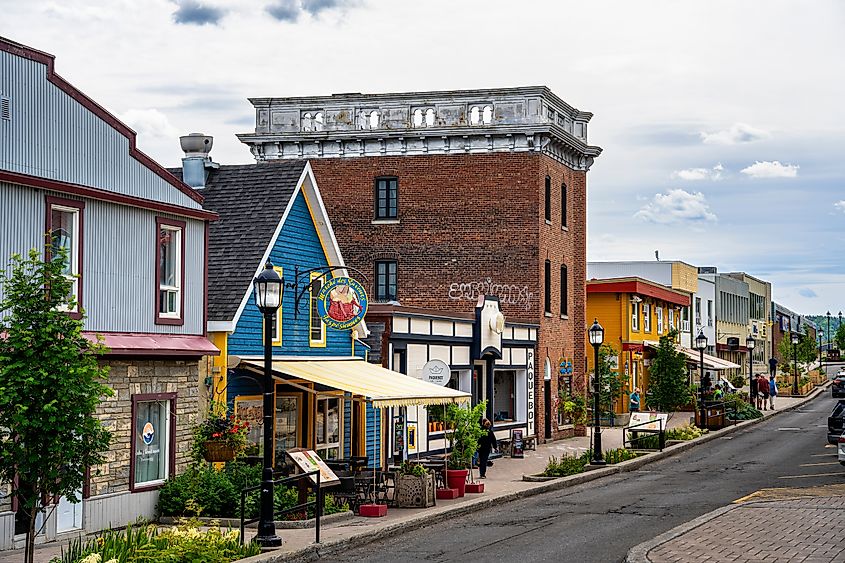
Located at the far eastern tip of the Gaspé Peninsula, the town of Gaspé is believed to take its name from the Mi’gmaq word Gespeg, meaning “land’s end”—a fitting name for a place where rugged cliffs and wide horizons overlook the Gulf of St. Lawrence.
A short drive from town, Forillon National Park is where mountains meet the sea. Sentier des Graves traces the coastline past dramatic cliffs, where minke whales can be spotted swimming below, and ends at Cap Gaspé Lighthouse, perched 95 meters above the Gulf and commanding vistas worth every step. Lighthouse enthusiasts can also visit the century-old Pointe-à-la-Renommée Lighthouse to learn about North America's first maritime radio station and wander the surrounding trails.
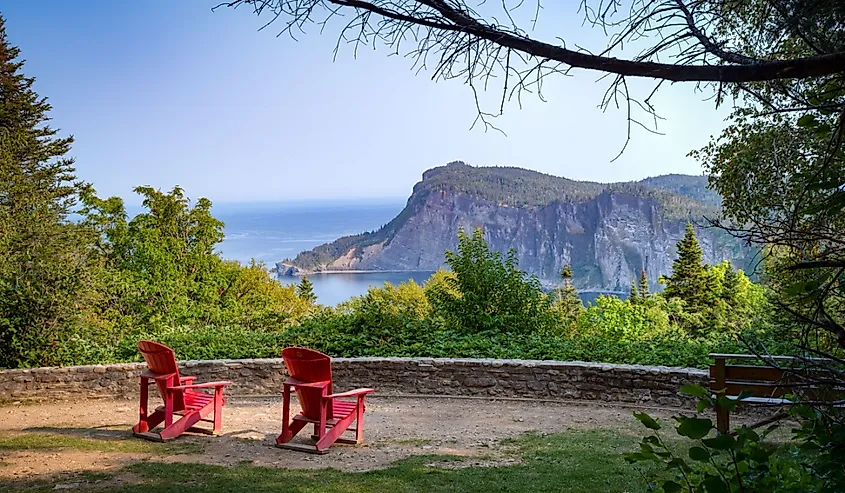
Back in town, stroll along the Promenade Jacques-Cartier. This waterfront boardwalk passes the Berceau du Canada (birthplace of Canada) historical site and the Croix de Gaspé monument, which together commemorate Jacques Cartier's 1534 landing and France's claim to the territory.
Kamouraska
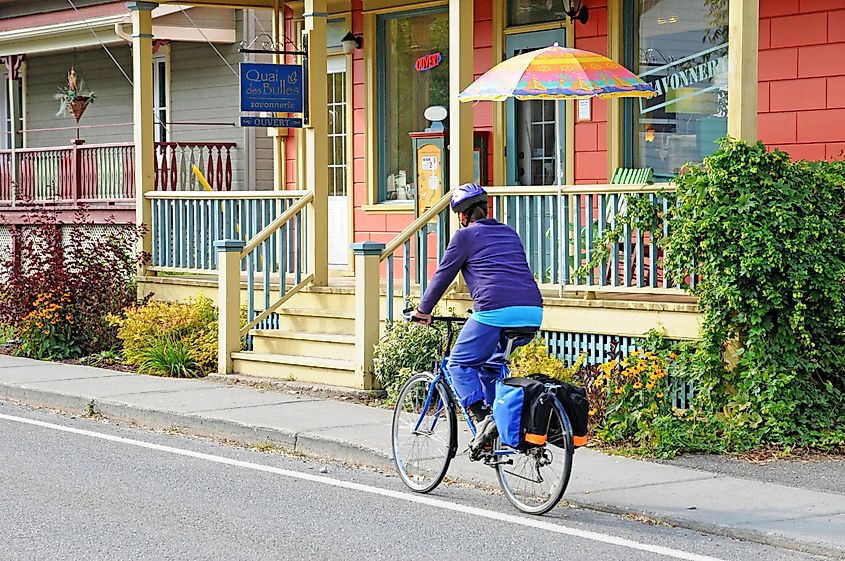
Set along the southern banks of the St. Lawrence, Kamouraska rests where the land meets the tide. The name Kamouraska comes from an Algonquin word meaning “where rushes grow at the water’s edge,” a nod to its beautiful marshes and reed-lined shores.
Along its main street, you’ll find rows of graceful 19th-century homes, many of which have been transformed into boutiques, cafés, and galleries by local artisans. Stop by Côté Est, a restaurant renowned for its refined regional cuisine and panoramic river views, or indulge in handmade chocolates and caramels at La Fée Gourmande, situated in a beautifully restored heritage house.
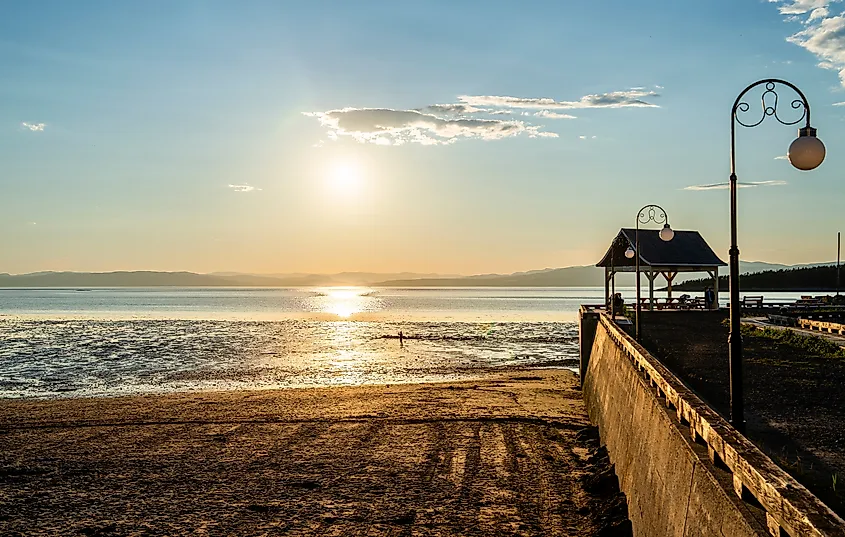
Down by the water, the Quai Taché and Quai Miller stretch into the river, reminders of the town’s maritime roots. The LeBel-Langlais House offers another glimpse into that history, while the old courthouse now houses the Centre d’art de Kamouraska. The Musée régional de Kamouraska, situated in a former monastery, showcases the region’s fishing traditions, shipbuilding, and folk art.
For nature lovers, the nearby SEBKA reserve offers sea kayaking, rock climbing, and sweeping views of the river. Inland, the Sentiers d’Ixworth offer nearly 60 km of forest trails, leading to a 20-meter waterfall on the Sainte-Anne River.
Rivière-du-Loup
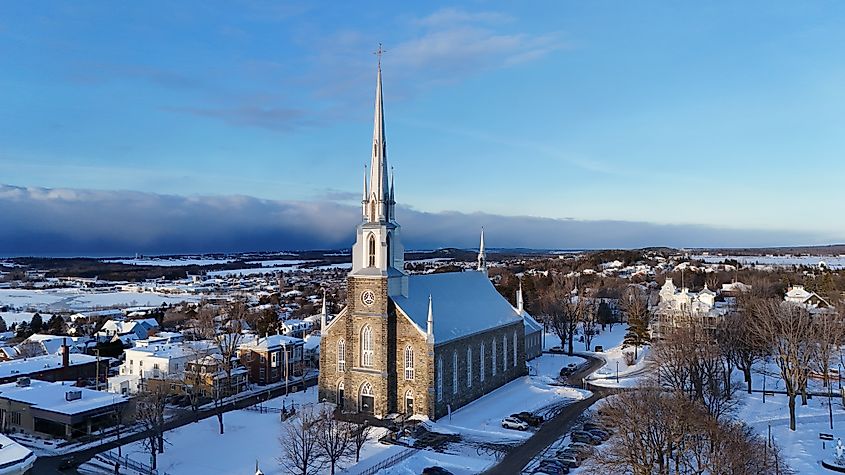
Home to approximately 20,000 people, this small city is situated where the Loup River meets the St. Lawrence, just over two hours’ drive from Québec City.
Downtown, Rue Lafontaine serves as the city’s hub, lined with well-preserved 19th-century buildings housing a variety of restaurants, bars, and bistros. During the summer, the street bustles with activity and energy. A standout landmark, the Église Saint-Patrice, built in 1855, showcases its Neo-Gothic design by architect Charles-Philippe-Ferdinand Baillairgé, featuring intricate stonework and stained glass windows.
About 10 km offshore is the unspoiled Île aux Lièvres, offering 45 km of trails and drawing migratory birds, making it a prime spot for birdwatching. Visitors can enhance their experience by renting a cottage, camping, or staying at the Auberge du Lièvre inn on the island.
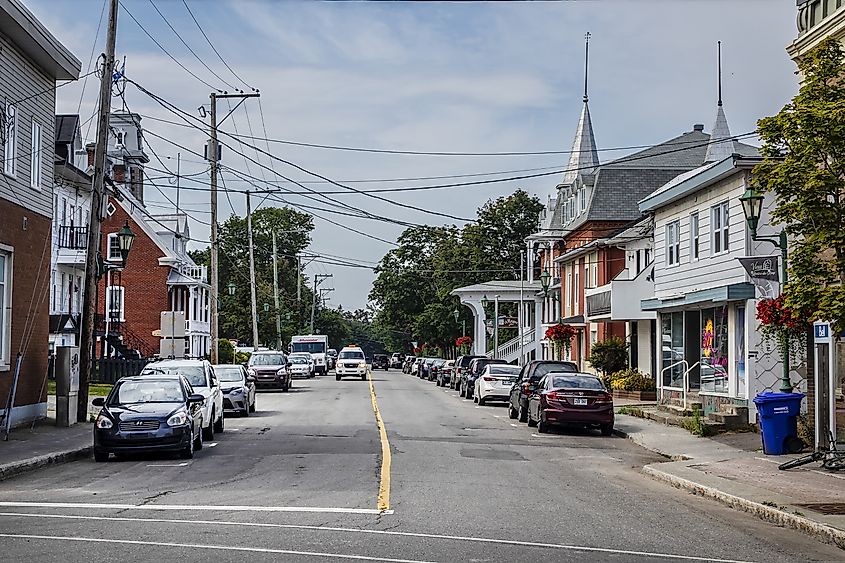
When you’re ready to step away from the streets and explore nature, Parc de la Pointe features a paved path along the water, perfect for leisurely walks and soaking up magnificent sunsets. Belugas and seals can occasionally be spotted in the river. For a more adventurous outing, Parc des Chutes offers over 10 km of forested hiking trails alongside the Loup River, leading to a 33-meter-high waterfall and an old hydroelectric station.
Sainte-Agathe-des-Monts
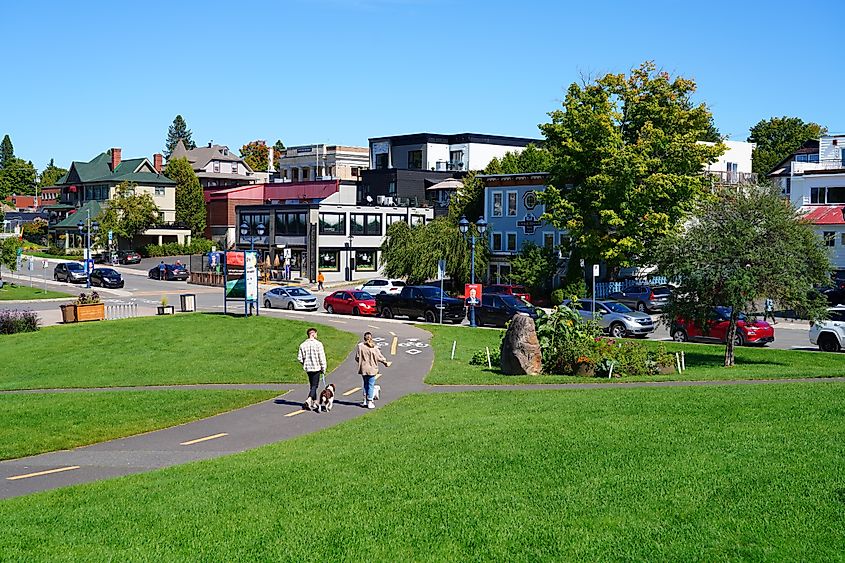
About 100 km north of Montreal, Sainte-Agathe-des-Monts sits between Lac des Sables and the Laurentian Mountains, with a relaxed vibe that has made it a favorite weekend retreat. The town grew around the lake in the 19th century and still revolves around it today—from its sandy beaches and walking paths to the small Marina Ste-Agathe, where boats drift across the calm water in the summer.
Rue Principale runs through the center, adorned with bakeries, cafés, and independent shops housed in restored heritage buildings. Théâtre Le Patriote, a historic performing arts venue that’s hosted generations of Quebec artists, still anchors the cultural scene and draws crowds for concerts and comedy nights. Just a short walk away, Le St-Vincent offers refined yet unpretentious dining in a restored presbytery, with menus that highlight local ingredients and seasonal produce. Each August, Sainte‑Agathe‑des‑Monts comes to life with the Festival des chansonniers, featuring local singer-songwriters performing on outdoor stages throughout the town.
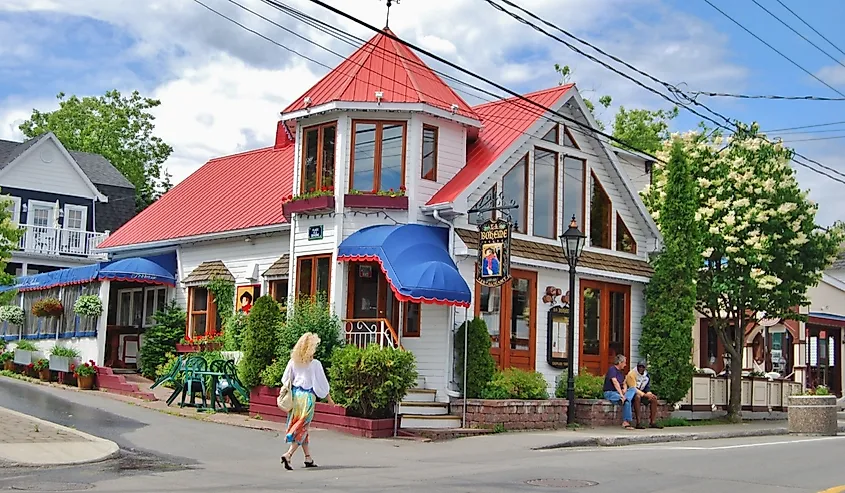
Only 10 minutes from the core, Tyroparc offers a dose of adventure with ziplines, via ferrata routes, and panoramic mountain views. In winter, Lac des Sables freezes into a skating trail, while nearby Parc Régional de Sainte-Agathe-des-Monts offers cross-country skiing and snowshoeing.
Saint-Raymond
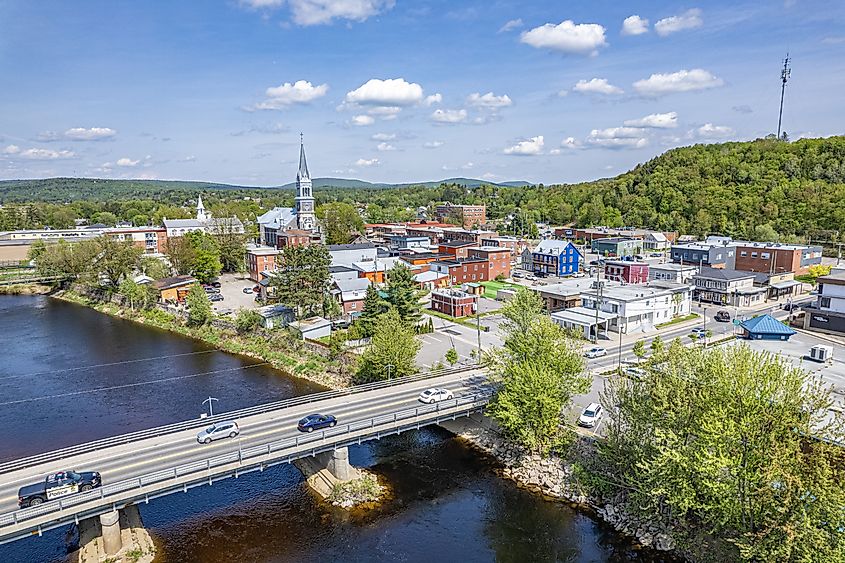
About 60 km northwest of Québec City, Saint-Raymond is a haven for outdoor activity, while still offering lots of laid-back fun.
The town’s main draw is Vallée Bras-du-Nord, a recreational park with roughly 80 km of trails for hiking and snowshoeing, 100+ km of mountain-bike singletrack, and about 17.5 km of river descents for canoeists and kayakers. If you’re into having lots of outdoor options in one place, this is the destination for you. Delaney Falls is a short hike within the Bras-du-Nord network that drops into a scenic cascade and natural pools.
If you have little ones (or you like treasure hunts), La Vallée Secrète—the gnome forest—runs interactive clue trails that end at a miniature gnome show. It is playful, hands-on, and open seasonally.
For a more relaxed pace, explore Jardins FloreSsens, featuring 30,000 square meters of themed gardens filled with aromatic and medicinal plants. Back in town, Maison Plamondon anchors the cultural scene with exhibits and intimate performances. To end off the day, enjoy craft beers and regional comfort food in a cozy lodge-style setting at Le Roquemont microbrewery.
Tadoussac
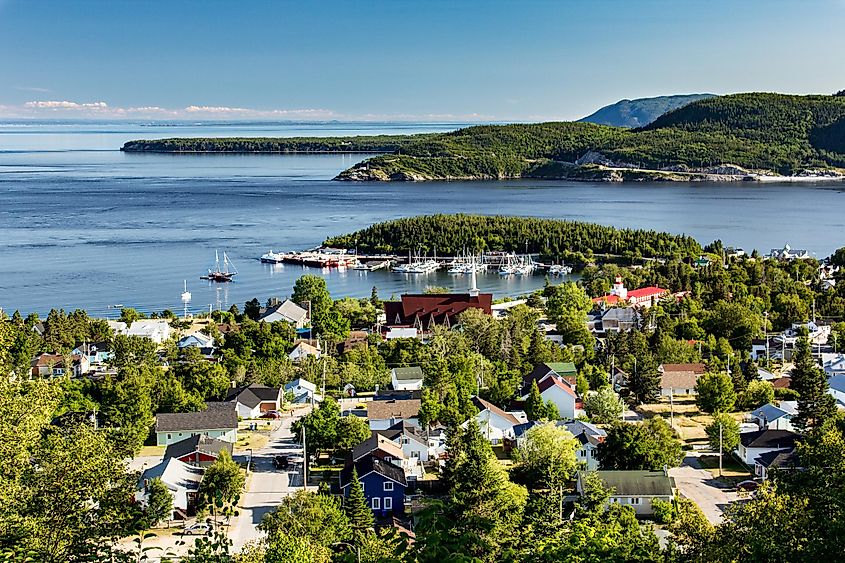
Situated at the confluence of the Saguenay Fjord and the St. Lawrence River, the tiny village of Tadoussac—home to just 800 people—is widely recognized as one of the best places to go whale watching. Long before it became a travel destination, this spot was a meeting ground for the Innu people, who came to fish and trade with other First Nations. In 1600, Tadoussac became the site of the first permanent settlement in New France. Today, visitors still arrive from all over to experience the magic of this coastal village.
The surrounding waters are a playground for 13 whale species, including minke, beluga, humpback, and the mighty blue whale. Whale-watching excursions run from May through October, and the Marine Mammal Interpretation Centre offers an engaging way to learn about the region’s marine life and conservation efforts.
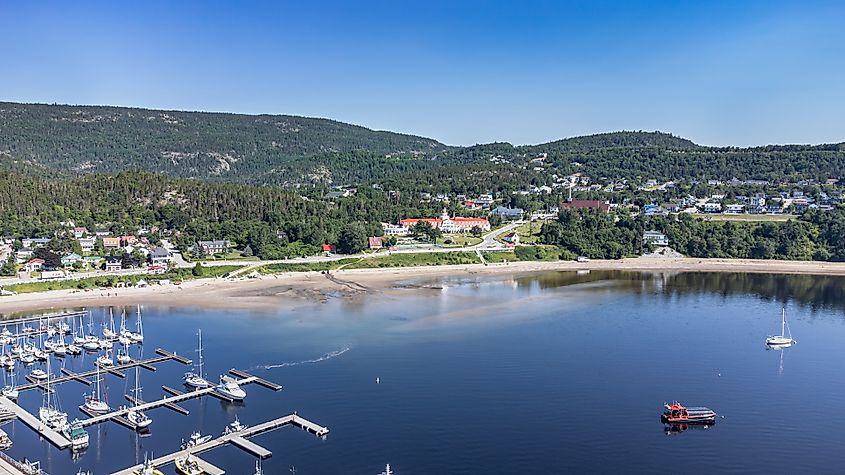
Perched on a grassy hill overlooking the bay, the Hôtel Tadoussac has welcomed travelers since 1864. Its red roof and white façade are instantly recognizable—and movie fans might recognize it from the 1984 film The Hotel New Hampshire.
At sunrise, locals and visitors alike make their way to Pointe-de-l’Islet, a short boardwalk trail that winds through spruce and fir trees before opening onto rocky outcrops. It’s one of the best vantage points for spotting whales just offshore. For something wilder, head into Saguenay Fjord National Park, where 350-meter cliffs rise above the water and trails weave through thick forest—home to beavers, moose, and the occasional black bear.
Uncover Quebec’s Picturesque Gems
Quebec’s small towns offer more than just typical sightseeing—they provide a window into the province’s history, culture, and natural beauty. Each community carries its own personality, whether through historic architecture, vibrant local arts, or the surrounding landscapes that invite exploration. Strolling along waterfronts, hiking forested trails, or sampling regional cuisine gives a sense of life at a gentler pace. These towns reward curiosity and offer moments of discovery at every turn, revealing the enduring charm and distinctive character that make Quebec unlike anywhere else in North America.
